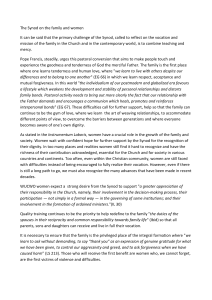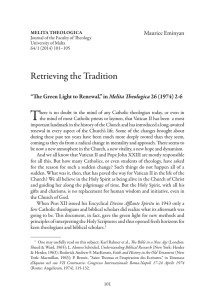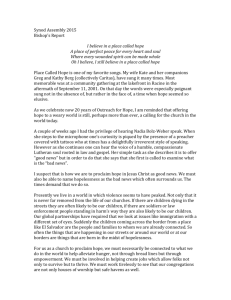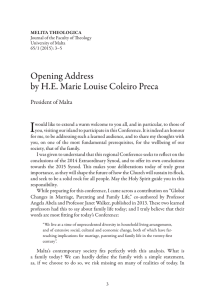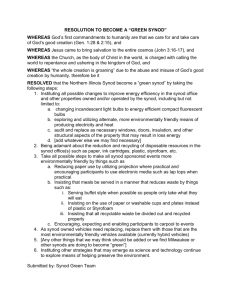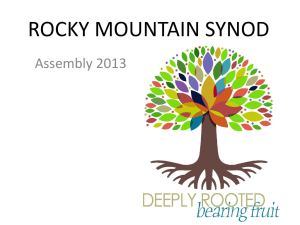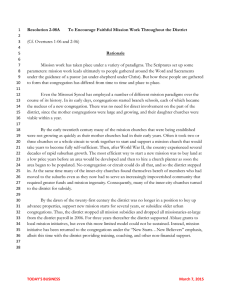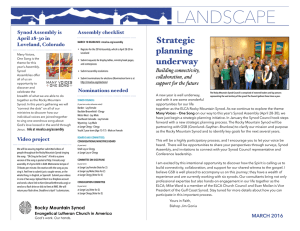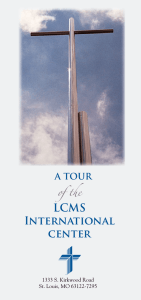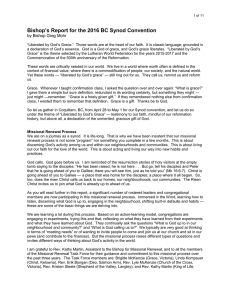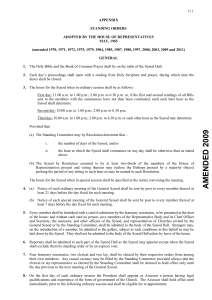P “A Conversion … in the Language We Use” Introduction Paul Pace
advertisement
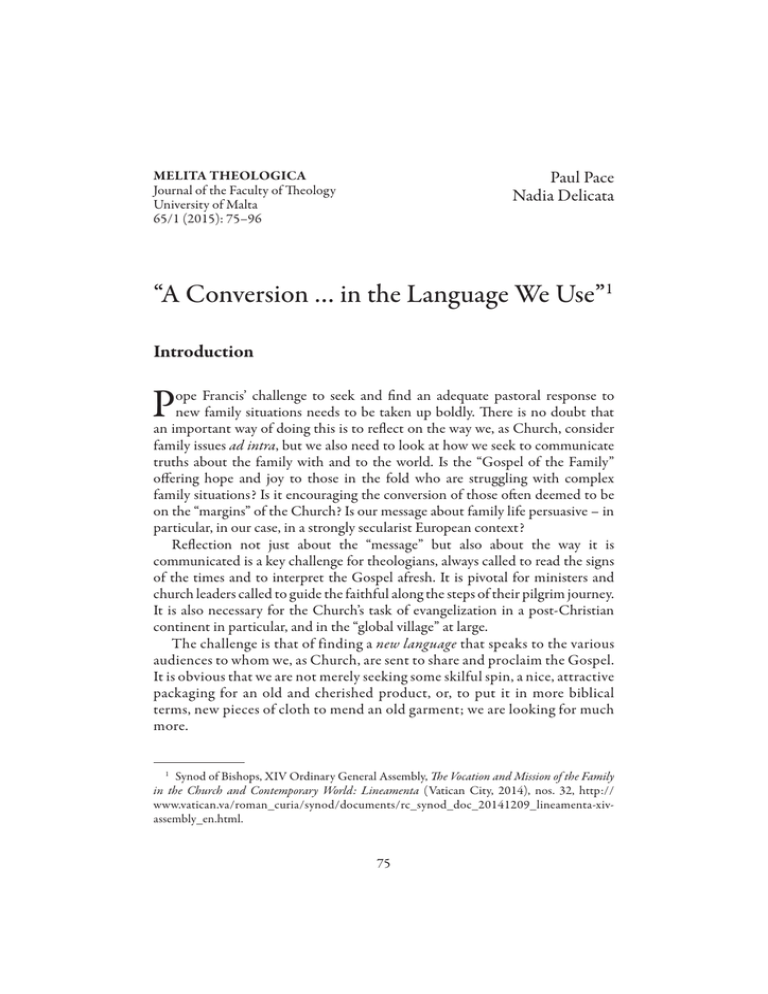
Paul Pace Nadia Delicata MELITA THEOLOGICA Journal of the Faculty of Theology University of Malta 65/1 (2015): 75–96 “A Conversion … in the Language We Use”1 Introduction P ope Francis’ challenge to seek and find an adequate pastoral response to new family situations needs to be taken up boldly. There is no doubt that an important way of doing this is to reflect on the way we, as Church, consider family issues ad intra, but we also need to look at how we seek to communicate truths about the family with and to the world. Is the “Gospel of the Family” offering hope and joy to those in the fold who are struggling with complex family situations? Is it encouraging the conversion of those often deemed to be on the “margins” of the Church? Is our message about family life persuasive – in particular, in our case, in a strongly secularist European context? Reflection not just about the “message” but also about the way it is communicated is a key challenge for theologians, always called to read the signs of the times and to interpret the Gospel afresh. It is pivotal for ministers and church leaders called to guide the faithful along the steps of their pilgrim journey. It is also necessary for the Church’s task of evangelization in a post-Christian continent in particular, and in the “global village” at large. The challenge is that of finding a new language that speaks to the various audiences to whom we, as Church, are sent to share and proclaim the Gospel. It is obvious that we are not merely seeking some skilful spin, a nice, attractive packaging for an old and cherished product, or, to put it in more biblical terms, new pieces of cloth to mend an old garment; we are looking for much more. 1 Synod of Bishops, XIV Ordinary General Assembly, The Vocation and Mission of the Family in the Church and Contemporary World: Lineamenta (Vatican City, 2014), nos. 32, http:// www.vatican.va/roman_curia/synod/documents/rc_synod_doc_20141209_lineamenta-xivassembly_en.html. 75
